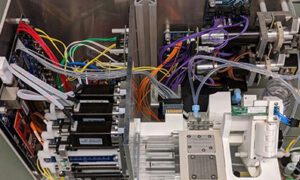Are you tired of lagging behind your friends in the latest multiplayer games, constantly battling frame drops and stuttering visuals? You’re not alone. Gamers everywhere are perpetually searching for that sweet spot where performance meets enjoyment, but what if we told you that boosting your FPS (frames per second) doesn’t always require a shiny new console or expensive hardware upgrades? In this blog post, we’ll dive into practical tips and clever tweaks to enhance your gaming experience without breaking the bank. Get ready to elevate your gameplay and immerse yourself in stunning graphics at smooth framerates—it’s time to unlock the full potential of your console! Let’s level up together!
Introduction
Are you tired of lagging gameplay and stuttering graphics while trying to immerse yourself in your favorite gaming worlds? If you’re a console gamer, you know that achieving smooth frames per second (FPS) can feel like an uphill battle. But what if I told you there’s hope beyond shelling out for the latest hardware upgrades? Yes, there are clever tricks and tweaks that can boost your FPS without breaking the bank. Whether you’re entrenched in epic battles or exploring vast open worlds, enhancing your gaming experience is within reach. Let’s dive into some effective strategies on how to improve FPS on gaming consoles without hardware upgrades!
What is FPS and why does it matter?
Frames per second, or FPS, measures how many images a console displays each second. A higher FPS means smoother gameplay and more fluid visuals.
In gaming, this metric is crucial. It directly impacts your experience by affecting motion clarity and responsiveness. Imagine trying to navigate through action-packed scenes with choppy movements; it can be frustrating.
Different genres benefit from different frame rates. Fast-paced shooters thrive on high FPS for precise aiming and quick reactions. Conversely, slower games might not demand as much but still require consistency for an enjoyable playthrough.
Gamers often perceive 30 FPS as the bare minimum for decent performance. Meanwhile, 60 FPS is the sweet spot for most titles today, delivering immersive graphics without lagging behind in response times.
Understanding what FPS entails helps players appreciate why optimizing their setup matters so much to overall enjoyment and competitiveness in their favorite games.
Common ways to improve FPS on gaming consoles (graphics settings, hardware upgrades)
Improving FPS on gaming consoles often starts with tweaking graphics settings. Lowering the resolution or adjusting texture quality can have a significant impact on your frame rate. Many games allow you to choose between performance and visual fidelity; opting for performance mode prioritizes smoother gameplay.
Hardware upgrades are another common route, but they can be costly and complicated. Unlike PCs, consoles are often limited in upgrade options. Some gamers explore external storage solutions or cooling systems to boost performance indirectly, though these methods might not always yield dramatic results.
Another simple adjustment involves turning off unnecessary background applications that may consume precious system resources during gameplay. This helps maintain optimal performance without needing any hardware changes at all.
Alternative methods for improving FPS without hardware upgrades
To enhance FPS without investing in hardware, start by adjusting game-specific settings. Many titles offer options to lower graphic fidelity while maintaining gameplay quality. Reducing shadows or disabling motion blur can lead to smoother performance.
Next, focus on storage management. A cluttered hard drive can slow down your console’s performance. Regularly clear out old games and applications you no longer use. This frees up valuable space and helps the system run more efficiently.
Network issues often hinder online gaming experiences as well. For optimal connection speeds, try using an Ethernet cable instead of Wi-Fi when possible. Additionally, reducing background downloads during playtime ensures your bandwidth is dedicated solely to gaming.
Lastly, keep your console cool and dust-free for better airflow and longevity of components that impact performance factors like frame rates.
Game-specific settings/tweaks
Many games come with settings that can significantly impact FPS. Finding the right balance between graphics quality and performance is key.
Start by lowering the resolution or adjusting texture quality in-game. These tweaks often yield a noticeable boost in frame rates without sacrificing much visual fidelity.
Some titles allow you to turn off unnecessary effects like motion blur, shadow details, or anti-aliasing. Disabling these features can lead to smoother gameplay.
Exploring game-specific forums might reveal hidden settings tailored for maximum performance on consoles. Players often share their configurations to help others achieve better results.
Additionally, consider enabling performance modes if available. Many modern games offer options designed specifically for higher frame rates over graphical detail.
Experimentation is crucial here; what works wonders for one title may not apply to another. Keep trying different combinations until you find your sweet spot for optimal FPS.
Clearing storage space and optimizing console performance
Clearing storage space on your gaming console can significantly boost its performance. Over time, downloaded games, updates, and miscellaneous files accumulate. This clutter can slow down system processes, affecting overall gameplay.
Start by deleting unused games or applications. You might discover hidden gems you forgot about in the process. Also, consider moving some of these items to an external hard drive if you want to keep them for later use.
Don’t overlook clearing cache data as well. Most consoles allow you to do this through their settings menu easily. A clean slate makes it easier for your console’s operating system to run smoothly.
Lastly, regularly check for software updates from the manufacturer. These patches often include optimizations that enhance performance without any hardware changes required on your end. Keeping everything up-to-date is a simple yet effective strategy for maintaining peak efficiency while gaming.
Network optimization tips for online gaming
A stable and fast internet connection is crucial for online gaming. Start by using a wired Ethernet connection instead of Wi-Fi whenever possible. This reduces latency and ensures a more reliable signal.
Next, minimize the number of devices connected to your network while gaming. Each device sharing bandwidth can slow down your speed significantly.
Consider adjusting Quality of Service (QoS) settings on your router. Prioritize gaming traffic to ensure smooth gameplay, especially during peak hours when many users are online.
Regularly update your router’s firmware as manufacturers often release improvements that enhance performance and security.
Lastly, keep an eye on background applications running on your console or PC before you dive into a game. Closing unnecessary apps can free up resources and help maintain steady FPS throughout your session.
Tips for maintaining consistent FPS on consoles
To maintain consistent FPS on your gaming console, start by keeping the system cool. Overheating can lead to performance drops. Ensure proper ventilation around your console and consider using a cooling stand.
Regularly update your games and firmware. Developers release patches that optimize performance, which can have a significant impact on FPS.
Next, manage background applications. Close unnecessary apps running in the background while playing to free up resources for smoother gameplay.
Consider adjusting the display settings of your TV or monitor as well. Sometimes, enabling features such as game mode can reduce input lag, enhancing overall experience without affecting frame rates negatively.
Lastly, be mindful of power management settings on your console. Keeping it set for optimal performance rather than energy savings will help maintain that desired smoothness during intense gaming sessions.
Improving FPS on gaming consoles without hardware upgrades is possible with the right knowledge and techniques.
Improving FPS on gaming consoles without hardware upgrades is achievable through a series of strategic adjustments and optimizations. By understanding what FPS means and its significance, you can take the necessary steps to enhance your gaming experience.
Exploring game-specific settings allows players to find the perfect balance between visuals and performance. Optimizing storage space can lead to significant gains in speed, while cleaning up files ensures your console runs smoothly. Additionally, fine-tuning network settings will provide a more stable online gameplay experience.
Staying proactive with maintenance tips helps maintain consistent FPS over time. Regular updates and careful management of system resources make all the difference when trying to achieve peak performance.
With these insights at hand, anyone can elevate their console gaming sessions without spending on new hardware. Embrace these techniques for an improved gaming journey that keeps you immersed in action-packed adventures without interruption.
Conclusion
By implementing these tips and tricks, you can significantly improve the FPS on your gaming console without having to spend money on hardware upgrades. From optimizing settings to clearing up storage space and even adjusting the placement of your console, there are various ways to boost performance and elevate your gaming experience. So before shelling out for a new gadget, give these methods a try and enjoy faster frame rates in no time. With a little effort and some adjustments, you can maximize the potential of your existing gaming setup without breaking the bank.



































